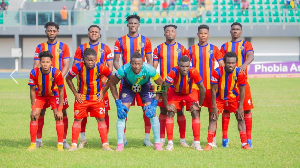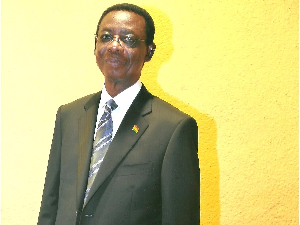Cape Coast, Feb. 17, GNA - More than 600,000 people in Central, Volta, Eastern and Northern regions will soon benefit from a 77.34 million-US-dollar rural water supply project to help to increase coverage in the remote parts of the country.
The project to be funded mainly by the World Bank would provide the four regions with 40 small-towns water supply systems, 10 small communities pipe water supply systems, 1,800 boreholes fitted with hand pumps and 200 institutional latrines including hygiene promotion.
The Central Regional Minister, Mrs Ama Benyiwa-Doe, announced this at a day's orientation workshop for metropolitan, municipal and district chief executives on the activities of the Community Water and Sanitation Agency (CWSA) on Wednesday.
The workshop coincided with the launch of the new water and sanitation project dubbed: 93Sustainable Rural water and Sanitation Project (SRWSP)" which will cover 13 out of the 17 MMDAs in Central Region.
The SRWSP is a five-year project. It is expected to provide 200 boreholes, eight small-towns pipe systems, eight limited mechanized water systems and some institutional KVIPs in the region.
The project will also focus on intensifying hygiene promotion and ensure behavioral patterns on the use and access to safe water and also to improve sanitation facilities in some selected communities and small towns. The SRWSP will in addition, build the capacities of the MMDAs and th= e Regional Coordinating Council and also make provision for office equipment and four pick-up vehicles.
Mrs Benyiwa-Doe expressed concern that people along the coastal belt of the region were most deprived in the area of water supply due to its salinity and appealed to the Ghana water company Limited (GWCL) to collaborate with the CWSA to evolve techniques to provide adequate potable water to the people.
She said lack of maintenance had resulted in the breakdown of water supply facilities compounding already low water coverage in the region and urged the Agency to see to the operation and maintenance of those facilitie= s for sustainable water delivery until appropriate board was put in place. The Minister called for the support and co-operation of the various assemblies to ensure a smooth take-off while the Agency provided consistent effective supervision, monitoring and evaluation of all stages of the project implementation.
Mr Philip Amanor, Regional Director of CWSA, noted that despite the completion of numerous water and sanitation projects in the region, the coverage rate of water supply was 55.92 per cent whilst that of sanitation was only 10 per cent with a water coverage gap of 20.08 per cent. He said the region, therefore, needed substantial amount of investment to facilitate the achievement of the 76 per cent of water coverage and 30 per cent for sanitation to meet the Millennium Development Goals on water and sanitation.
Mr Amanor appealed to the beneficiary assemblies to strengthen their structures and to contribute their counterpart funding to enhance the delivery of the project. He pledged the Agency's commitment for a sustainable partnership wi= th the MMDAs and all actors in the development of water and sanitation in the region.
General News of Thursday, 17 February 2011
Source: GNA












